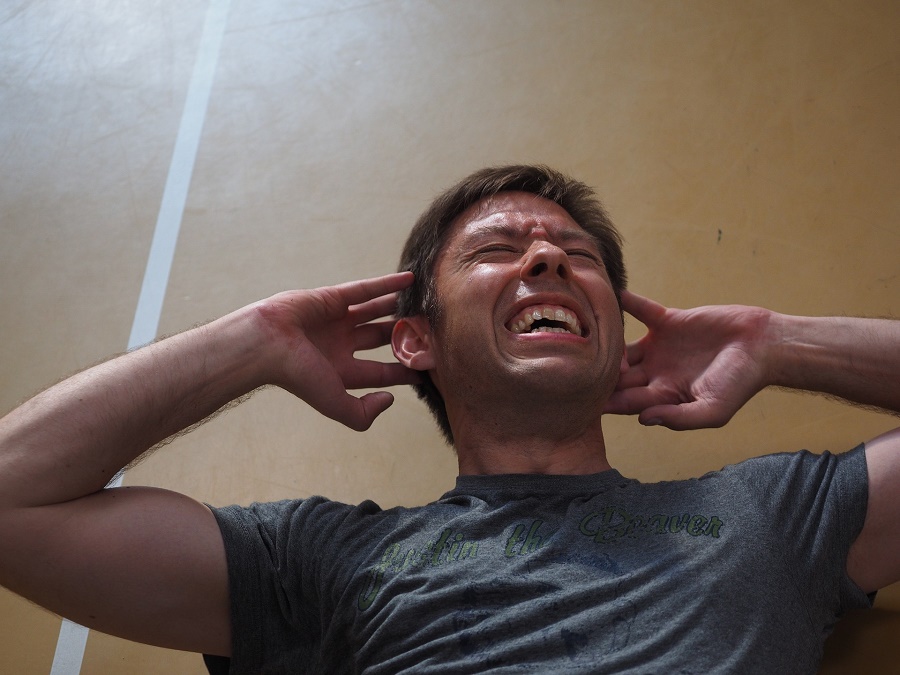Muscle cramps what are they? And what you can do about them…
A common problem among my clients is muscle cramps, so I have looked at the latest research and summarised the advice to save you spending hours on the internet trying to find the relevant information.
What are muscle cramps?
Muscle cramps can range from an inconvenience lasting a few seconds to severely debilitating pain lasting 15 minutes or more. While it is a problem normally associated with exercise, it can also occur in non-athletes i.e. the majority of my clients.
Cramp can affect any muscle in the body and occurs when muscle fibres contract involuntarily and fail to relax normally. They are most common in muscles that cross over two joints e.g. the calf muscles, hamstring muscles (back of your thigh) and the quadriceps muscles (front of your thigh). Other areas that can be affected include the hands, stomach muscles and smaller muscles of the feet and toes.
What causes muscle cramps?
Despite extensive research, the exact cause of the problem is still a mystery. It is known that cramps occur when the mechanisms controlling muscle contraction and relaxation fail to work properly, resulting in the contraction lasting too long.
They can be a real pain……….
There are a number of factors that might contribute to the problem including:
- Poor hydration and insufficient levels of electrolyte minerals in muscles.
- Making muscles work too hard during an exercise that the body is not used to e.g. running 10 miles instead of your usual 5.
- Inadequate rest and recovery before more exercise, as muscles are much more likely to cramp when fatigued.
- Genetics play a role with some people more prone to muscle cramping than others.
- Age, as muscles in the elderly are more prone to cramping than in younger people.
- An injury, where muscles go into spasm in order to ‘protect’ the injured area.
- A side effect of some medications including statins, ‘water tablets’ (diuretics) and asthma medications or an illness such as hyperthyroidism (overactive thyroid), hypothyroidism (underactive thyroid), type 1 or type 2 diabetes. If your muscle cramps coincide with a new medication or you have any other concerns you need to speak to your doctor who will determine if anything more serious is going on, and do not stop taking any medication!!
So what can you do?
Generally, the fitter and healthier you are, the lower your risk of developing muscle cramps. This means that improving your fitness and general health, can significantly reduce your risk. The good news is that it doesn’t mean spending hours in the gym, just being more active, drinking more water and carrying out a few simple stretches can make a huge difference.
Here are some of the other things you can do to help reduce the problem.
Hydration – Maintain adequate hydration (1) as reduced hydration levels can lead to impaired electrical signalling to the muscles resulting in an increased risk of cramping. The common advice is to drink 2 litres of water a day, in fact the amount you need may be more or less than that, depending on your activity levels, body size and other factors. I could go on, but that is a topic for another blog…
Calcium and magnesium – These elements are essential for the contraction and relaxation of muscle fibres. A high-magnesium diet can help as this is an element that is often low in Western diets (2) and research suggests that low intake of magnesium can affect exercise performance generally (3). Good sources of magnesium include wholegrain unrefined (not white) breads and cereals, while brown rice, all nuts and seeds (especially sesame seeds), beans, peas and lentils (especially chick peas) and green leafy vegetables are all excellent sources.
Because of their role in muscle contraction and relaxation, research has focused on the role of calcium and magnesium in muscle cramps. In pregnant women, low magnesium status is associated with increased incidence of muscle cramps and magnesium supplementation helps reduce this condition (4-6). Magnesium supplementation has also been shown to help sufferers of ‘night cramps’, which involves nocturnal muscle cramping (normally in the legs) (7).
Stretching – One thing that nearly everybody agrees on is regular stretching targeted at muscles prone to cramping can greatly reduce the incidence of muscle cramps as well as stopping cramp once it’s started (8,9). Passive stretches held for 30 seconds seem to be most effective; the mechanism is unclear but a regular program of stretching is known to lengthen muscle fibres, by altering spinal neural reflex activity. Regular massage or foam rolling may also be beneficial as they promote general muscle relaxation.
In Summary
In most cases, you should be able to self-manage muscle cramps and reduce their frequency and intensity by following the advice outlined in this article. If you have any concerns please seek the advice of your doctor, especially if you have recently changed medication or the cramps have been getting worse over time.
Feel free to contact me at Sollus Healthcare if you need any advice on stretching or simple ways to increase activity to help reduce your cramping problem.
References
- Int J Sport Nutr Exerc Metab. 2005 Dec; 15(6):641-52
- Crit Rev Food Sci Nutr, 42(6): 533-63, 2002
- J Nutr, 132(5): 930-5 2002
- Z Geburtshilfe Perinatol. 1982 Nov-Dec;186(6):335-7
- Am J Obstet Gynecol. 1995 Jul;173(1):175-80
- Fortschr Med 1984 Sep 13;102(34):841-4
- Med Sci Monit 2002 May;8(5):CR326-30
- J Sports Sci 1997 Jun;15(3):277-85
- Clin Sports Med 2008 Jan;27(1):183-94, ix-x

